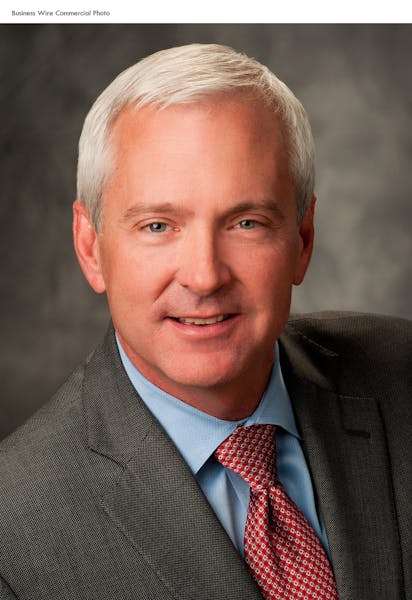The bitter cold winter helped electric and gas utilities shovel in profits from January through March.
Xcel Energy, a natural gas and electricity supplier in Minnesota and other states, reported Thursday that three-month earnings rose 10 percent over the same period a year go, exceeding Wall Street expectations.
CenterPoint Energy, which serves 3.3 million natural gas customers in six states from Texas to Minnesota, reported a 17 percent increase in operating income for its gas distribution business.
"In the past two decades we have been so skewed in the direction of mild winters," said Mark Seeley, a University of Minnesota extension climatologist. "This particular heating season has been extraordinary in its aberration. Why would we expect anything less than to see a tremendous spike in [energy] usage and profits?"
When it comes to heating, Minnesota just emerged from one of the worst seasons. Seeley said the 2013-14 winter ranks as the fourth-highest in heating degree days, a measure of building energy needs. The worst winter for heating was 1935-36.
During January through March, CenterPoint, the state's largest gas utility with 823,000 customers, reported supplying 1 billion cubic feet of gas on each of 35 days. That usually happens only about 10 days during the winter quarter, the Houston-based utility reported. One billion cubic feet is enough to supply 10,000 homes for a year.
In Milwaukee, Wisconsin Energy this week reported delivering more natural gas to its 1.1 million customers in the first quarter than during any other quarter in history, breaking the 2008 first-quarter record by 11 percent.
Alliant Energy of Madison, Wis., which has more than 1.4 million customers in Wisconsin, Iowa and Minnesota, said Thursday that extremely cold temperatures boosted electric and gas sales, adding $22 million to first-quarter margins.
Lasting effects
Bill Blazar, senior vice president for the Minnesota Chamber of Commerce, said the spike in energy costs is another illustration of how weather affects the economy. But little can be done about the cold, he added.
"The impact of this will show up later — whether you are a business or a homeowner — if you wrote bigger checks for gas or electricity," he said. "You just have to roll with the punches or hope that we have a little bit cooler summer so we have lower air conditioning bills."
The cold winter wasn't the only factor driving some utilities' earnings. Profits also were helped by higher rates paid by Xcel customers in some of the eight states where it operates. That amounted to a $47 million gain for the quarter. The weather's effect was less — an extra $28 million for electricity and natural gas for the period ending in March.
While gas utilities don't profit on the price of natural gas itself, they make money when customers use more of it because the delivery charge is partly based on the amount consumed.
That pricing strategy will be debated by Minnesota regulators on Monday because CenterPoint is seeking a rate hike that would increase the basic charge that residential customers pay regardless of energy usage. The utility wants to raise it from $8 per months to $15, though consumer groups and other interests object.
Bid to raise basic charge
Raising the basic charge would bring higher bills in summer, when gas usage is lower, and could stabilize bills in winter. But low-usage customers could end up paying higher bills overall.
The cold also brought problems, and higher operating costs, to utilities. In late January, a TransCanada Corp. natural gas distribution line ruptured during minus-20 degree temperatures. That forced Xcel to scramble to maintain supplies for three days. Customers were asked to dial back their thermostats to conserve.
"The results of those proactive steps, along with the tremendous willingness of our customers to conserve, prevented what could have been a very dangerous situation," Xcel CEO Ben Fowke said.
Electricity demand rose in many places, including Xcel's Wisconsin service area, where company Chief Financial Officer Teresa Madden said midwinter propane shortages likely were a factor in increased power use.
Xcel serves 1.2 million electric and 437,000 natural gas customers in Minnesota. Its territory also covers parts of North Dakota, South Dakota, Wisconsin, Michigan, Colorado, Texas and New Mexico.
Xcel said that electric demand, which has been relatively flat, seemed to be growing on its own. For example, with weather factored out, the company's Minnesota region had a 1.5 percent jump in commercial and industrial usage for the quarter. Fowke said it's too early to call it a trend.
Overall, Xcel reported quarterly earnings of $261 million, or 52 cents per share, compared with $237 million, or 48 cents per share in first-quarter 2013. That beat analysts' consensus earnings projection by 2 cents per share. Revenue was $3.2 billion, up 15 percent from a year ago.
Xcel didn't change its earnings outlook for the year. It stayed at $1.90 to $2.05 per share. Its stock also didn't change much, closing up 5 cents to $31.92.
David Shaffer • 612-673-7090 @ShafferStrib
Tennessee Volkswagen workers vote on union membership in test of UAW's plan to expand its ranks
Bitcoin's latest 'halving' has arrived. Here's what you need to know
BNSF Railway says it didn't know about asbestos that's killed hundreds in Montana town
Here's how Phish is using the Sphere's technology to give fans something completely different

